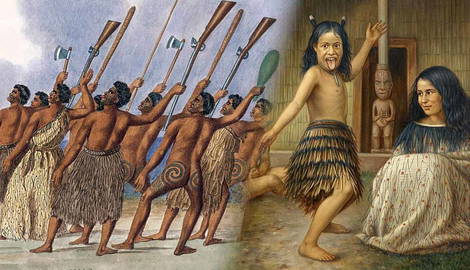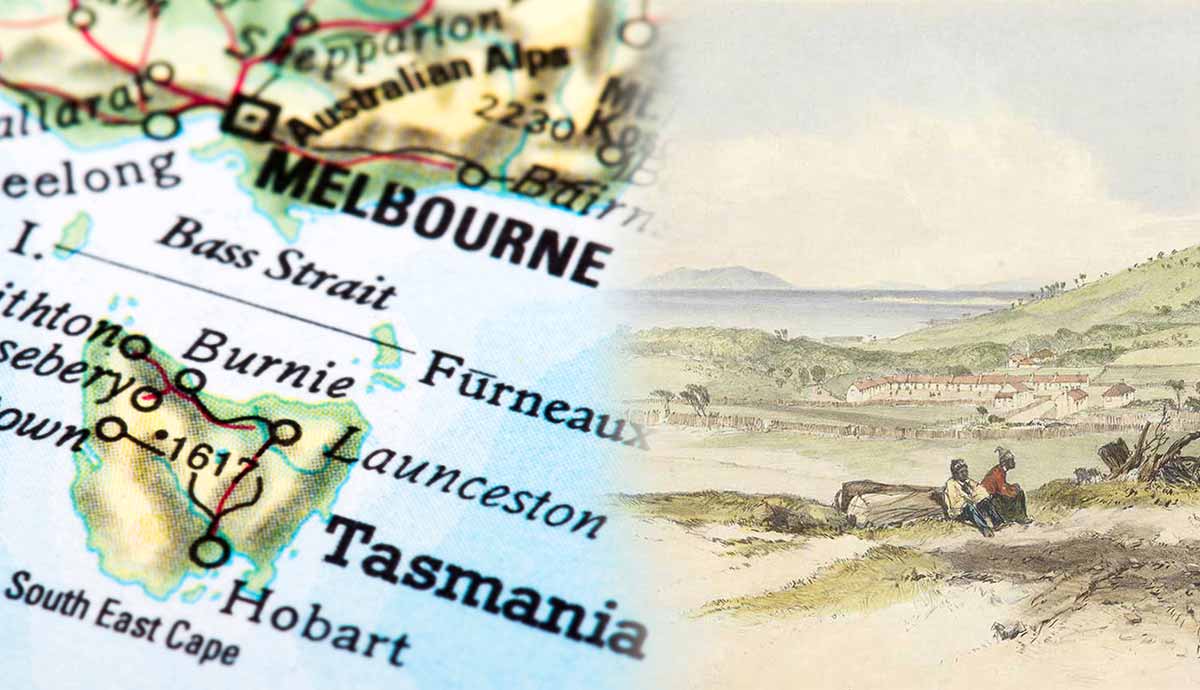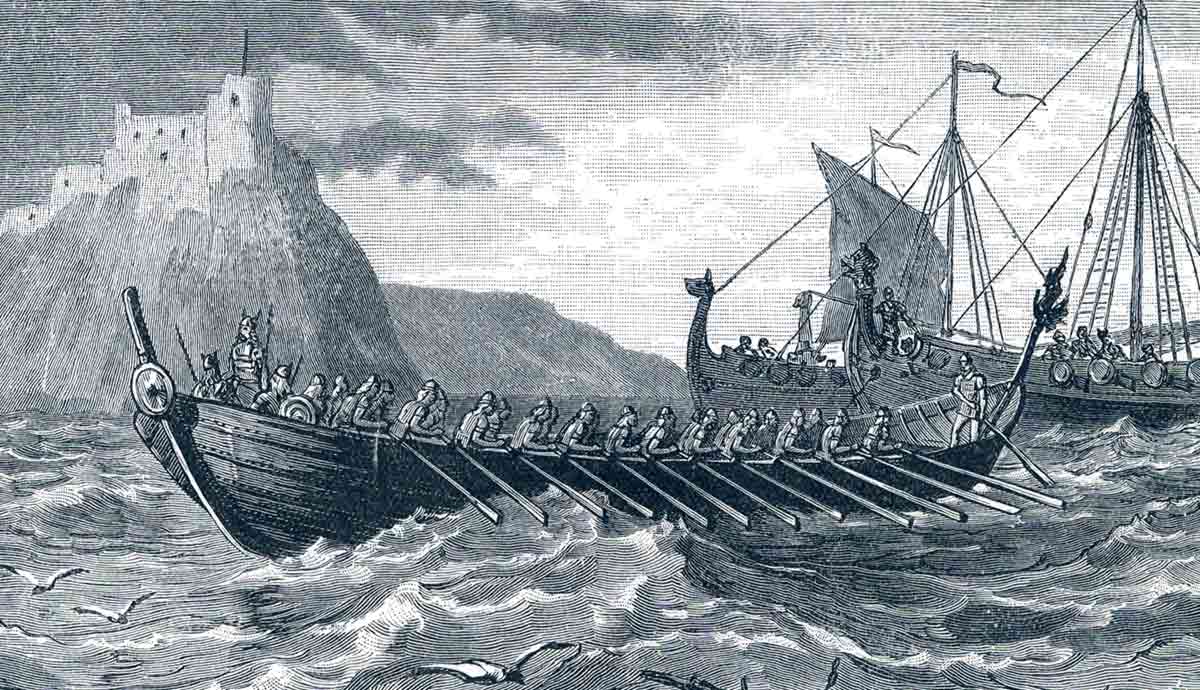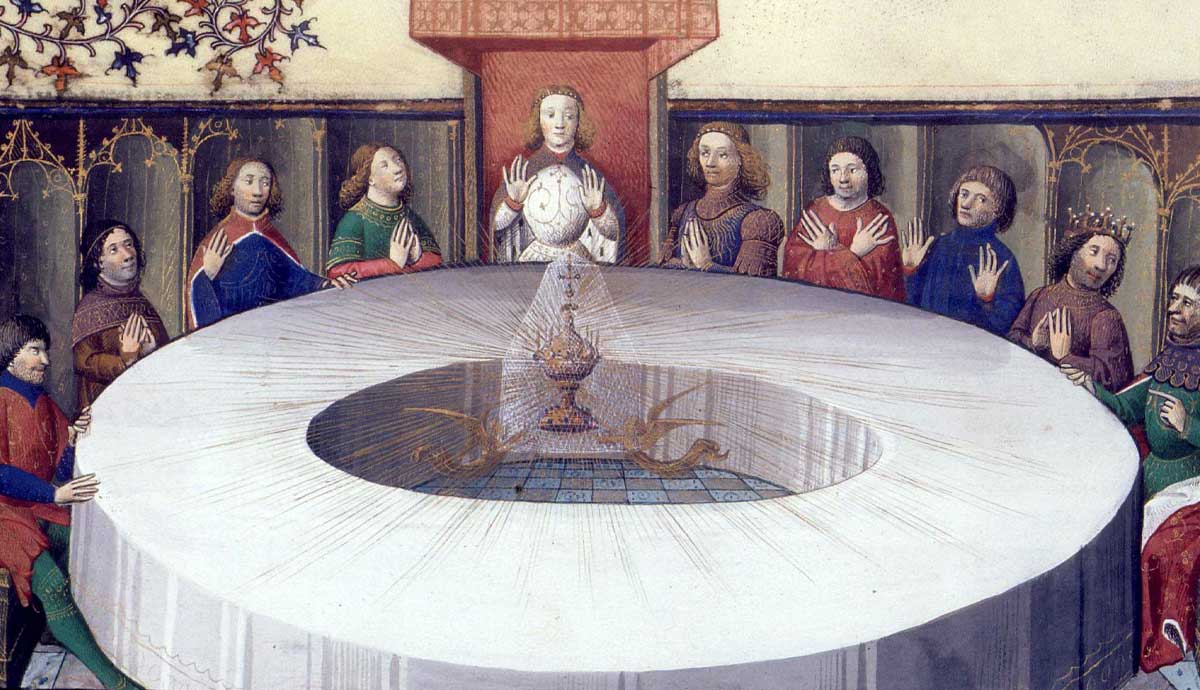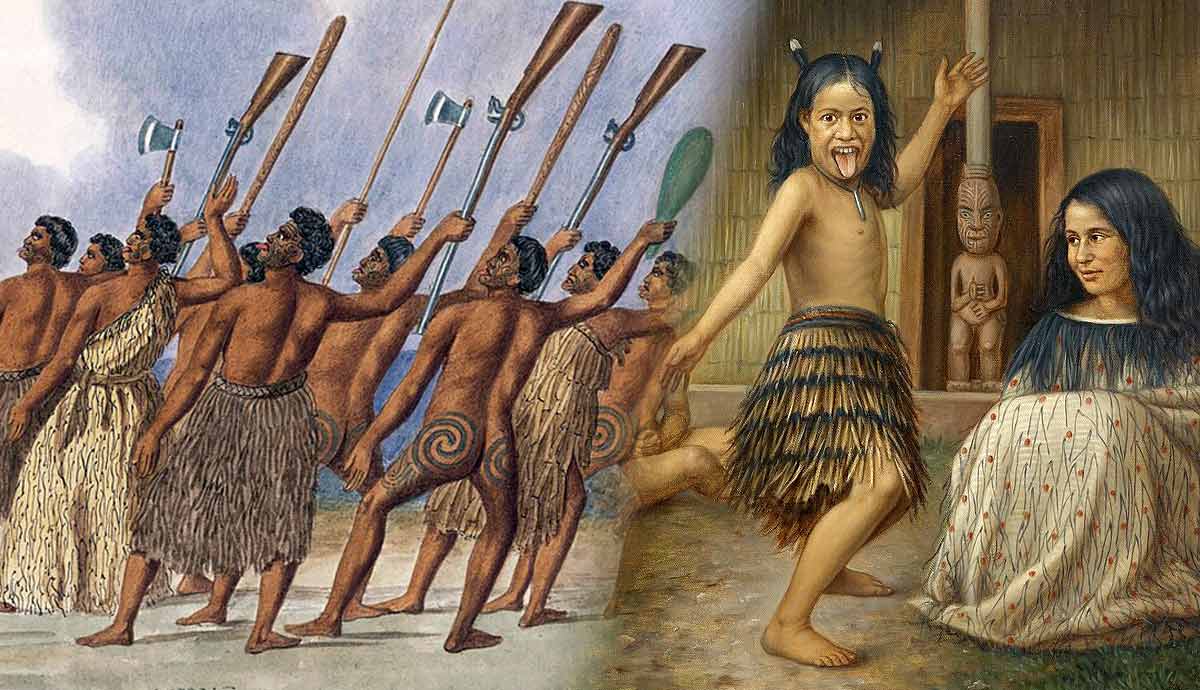
The Musket Wars, which occurred from the early 1800s to the 1840s, brought about a significant transformation in Māori society and warfare. This four-decades-long conflict was characterized by the widespread use of muskets, which had been introduced (both willingly and unwillingly) by European traders.
Violence raged across the South and North Islands, including archipelagos such as the Chatham Islands. It affected civilians and warriors alike. After 40 years of conflict, the power dynamics among Māori tribes had been permanently altered. Tribal borders were redefined, and entire tribes were devastated. Some groups, such as the Moriori, were almost wiped out.
Muskets and Land

The years between 1807 and 1840 were marked by extensive inter-tribal warfare. For the first decade, that is, between 1807 and 1818, Māori warriors relied mainly on traditional weapons, such as stone or wood tools, as well as hand-to-hand combats. In 1821, however, Chief Hongi Hika of the Ngāpuhi tribe (the Māori term for “tribe” is iwi) returned from Sydney with over 300 muskets.
Muskets, long-barrelled muzzle-loaded shoulder firearms, could fire lead balls at what was back then a considerable distance, physically removing killers from their victims and increasing the “surprise element.”
The bloodiest tribal battles took place between 1818 and 1840, although intertribal warfare involving muskets continued, to a lesser degree, after 1840. In most colonial countries, warfare was primarily caused by land issues, land ownership, land management, and land theft. This was true for Aotearoa (New Zealand) too.

In her A Concise History of New Zealand, historian Philippa Mein Smith writes that “the musket wars, as they became known, could just as well be called ‘land wars’ because so much territory changed hands in their wake.” However, the Musket Wars were as much about mana—the typical Māori concept of prestige, political status, and honor—as they were about land.
Inter-tribal conflicts were not new in Māori society, but the Musket Wars represented a catastrophe. Battles and outbursts of violence raged across the entirety of Aotearoa/New Zealand, from the South Island to the North Island. In a way, despite being fought primarily among Māori tribes, the Musket Wars were a colonial product, triggered and fueled by new colonial dynamics. The European newcomers, the Pākehā, had recently destabilized Māori society.
The (Māori) Man Who Introduced Muskets to the Māori

Three warrior chiefs emerged during the Musket Wars. One was Te Wherowhero (1770-1860) of the Waikato iwi (tribe), based in the western central region of the North Island. He took the name Pōtatau after becoming the first Māori king in 1858. Te Rauparaha (1768-1849), the other important warlord during the Musket Wars, was chief of the Ngāti Toa tribe. He was a descendant of Hoturoa of the Tainui waka (canoe) who, according to Māori tradition, had arrived from Polynesia to the North Island around 1400.
The most important figure of the Musket Wars was, however, Hongi Hika (1772-1828), rangatira (chief) of the Ngāpuhi people. His tribe occupied the Northland regions of the North Island, including the Bay of Islands (named by Captain Cook in 1769 and the first area in New Zealand to be permanently settled by Europeans), the Hokianga region, and Whangārei.

Some historians note that the Musket Wars would have happened regardless of European presence on the South and North Islands. While this might be true, the availability of European technology made the conflict bloodier and possibly more prolonged. Hongi Hika was instrumental in this. Before his 1821 journey to Sydney, his tribe already possessed (and knew how to use) muskets, but the incredible number of muskets—at least 300—that Hongi Hika brought from mainland Australia marked a turning point in Māori history.
During his 1820 journey to England, Hongi Hika was also gifted a suit of armor, which he used during his campaigns to demoralize his enemies. Over the next few years, Hongi Hika and his warriors led one successful attack after the other. They attacked the Ngāti Maru and Waikato tribes in 1822, then the Te Arawa on Mokoia Island in Lake Rotorua in 1823, and finally the Ngāti Whātua at Kaipara.

They defeated all of them. Captives were put to work on potato crops. Hongi Hika eventually died of the same firepower that had sealed his success — his mana. In 1827 he was shot during a battle in northern Hokianga. He passed from his bullet wound on March 3, 1828, at Whangaroa, in the northern part of the North Island, and his bones were buried in a secret location.
Without their leader, the Ngāpuhi lost most of their power. By the early 1830s, they were no longer a force to be reckoned with. The widespread use of muskets had already triggered a massive redistribution of population, especially in the North Island.
What Are the Three Phases of the Musket Wars?

Scholars divide the Musket Wars into three phases, with each phase dominated by the evolving relationship between warriors and muskets and the increased availability of muskets. During the first phase, muskets were limited in number, old, and of poor quality. Māori warriors were also inexperienced in the use of muskets. Muskets-owning tribes were feared by their enemies, but the actual impact of muskets in warfare was limited. Warfare usually took place in the summer months not to impact the growing of kumara, the sweet potato introduced by the Europeans which Māori people often traded or sold in exchange for muskets.
Some historians believe that the Musket Wars were triggered by the kidnapping (and subsequent killing) of high-ranking Ngāpuhi women by a group of escaped convicts from Van Diemen’s Land, present-day Tasmania. The women were closely related to Chief Hongi Hika and his kin and ally, Te Morenga (1760-1834).

War began in the northern regions of the North Island and soon spread to the rest of Aotearoa/New Zealand, to the South Island as well as to the Chatham Islands, an archipelago east of South Island inhabited by the Moriori.
The second phase began around 1821 when Hongi Hika returned from Sydney with his 300 muskets. The Ngāpuhi quickly became the most powerful, well-equipped, and feared tribe in Aotearoa/New Zealand. Other tribes left the region of present-day Auckland, fearing raids from the Ngāpuhi.
In 1822, Hongi Hika and his men launched a massive attack against the Waikato-Tainui tribe, the tangata whenua, that is, the “people of the land,” of the Waikato region, in the northern part of North Island. The arms race had begun. In 1824, Te Pehi Kupe (1795-1828), leader of the Ngāti Toa tribe (and uncle of feared leader Te Rauparaha), understood they needed more muskets.

He traveled first to England, then to Sydney, where he traded the gifts he had received and amassed in Europe, for muskets. His tribe was now ready to invade the South Island. During this phase, muskets continued to be extremely expensive.
In the summer of 1827-1828, Te Rauparaha invaded the South Island. Their occupation and warfare lasted six years. The bloodshed was immense. Traditional weapons could do nothing against the force of the muskets. By 1827, the Ngāpuhi and the Waikato tribes had the same amount of muskets.
Many Māori pā (traditional villages) became known as gunfighters or musket pā, that is, villages designed for musket fighting, reinforced with stockades, firing parapets, angling slopes, and trenches, to better protect against the power of muskets. The final phase of the Musket Wars saw Māori warriors become experts in the use of muskets. Women typically helped them reload.
European Intervention

While inter-tribal fighting was widespread among the Māori long before the coming of the Europeans, British captains, sailors, and whalers took advantage of it for economic reasons. In at least two (reported) instances, the violence of the Musket Wars was heightened by the presence of the Europeans.
In 1830, Ngāti Toa leader Te Rauparaha sought the assistance of Captain William Stewart (1776-1851) to restore his authority over southern tribes. He wanted to avenge the killing (and eating) of several Ngāti Toa chiefs, including Te Pehi Kupe, that had occurred in 1829. The one responsible was Te Maiharanui (also known as Tama-i-hara-nui), chief and hereditary spiritual leader of the Ngāti Rakiāmoa, an important hapū of the Ngāi Tahu tribe.

Captain Stewart agreed to help in exchange for 50 tons of dressed flax. On October 29, 1830, Te Rauparaha’s warriors left Kapiti Island aboard Stewart’s ship. When the Elizabeth finally anchored in Akaroa Harbour, Stewart contacted Te Maiharanui and convinced him to come aboard with the promise of trading guns for flax. Te Maiharanui met with him, followed by his wife and daughter.
As soon as he stepped into the captain’s cabin, Te Rauparaha’s warriors seized him and handcuffed him. They went ashore and killed many of the Māori men and women living in the nearby village (pā) of Takapūneke. Dozens were enslaved and many women were raped. Te Maiharanui died a slow, painful death, tortured, according to some accounts, by the widows of the Ngāti Toa chiefs killed at Kaiapoi.

Stewart was put on trial in Sydney as an accomplice to murder but escaped justice because there were no witnesses. In 1830s New Zealand, Māori men and women did not count as witnesses, because they were deemed too “savage.”
The Europeans’ involvement in the second instance was completely involuntary. In 1835, two tribes from Taranaki, in the west of North Island, the Ngāti Mutunga and Ngāti Tama, migrated to Wellington, where they seized a brig and kidnapped its captain.
With the newly acquired ship, they invaded the Chatham Islands, known among the Māori as Wharekauri. Its inhabitants, the Moriori, called them Rēkohu, which translates as “Misty Sun.” The Moriori were a splinter group of the Māori and had inhabited the Chathams since the 1500s. They were mainly sedentary hunter-gatherers, who lived in a peaceful, non-violent society, drastically opposed to that of the Māori.

When they formed a peace council to discuss the arrival of the 900 Māori invaders, the Ngāti Mutunga and Ngāti Tama mistook it for a war council. The Māori launched an indiscriminate attack on the Moriori and nearly exterminated them. According to Philippa Mein Smith, “the Moriori population numbered 1660 in 1835, and 101 by 1862.” Hundreds of men and women were enslaved. Up until 1863 when slavery was abolished, Māori kept Moriori slaves and forced Moriori women to have children with their Māori masters.
After the Musket Wars

The Musket Wars had a profound impact on Māori society, affecting the entire population, warriors and civilians alike. Although the actual number of casualties is impossible to determine, historians estimate that around 20,000 people died over the course of four decades, with some groups, like the Moriori, nearly exterminated.
Large areas, even entire districts across the North and South Islands, were depopulated or left sparsely settled as Māori men and women fled their homes and villages, either willingly or unwillingly. The displacement of thousands of people led some Māori tribes to seek assistance from the Europeans. This was seen as an opportunity for the Europeans to acquire the disputed land and the newly “free” regions, now open for future settlement. While some tribes lost power and prestige, others, such as the Ngāpuhi in the North and the Ngāti Mutunga and Ngāti Tama from Taranaki, gained mana.

The wars caused tribal boundaries to be redrawn. Decimated tribes were forced to intermarry to survive. The end of the Musket Wars is interlinked with the spread of Christianity across Aotearoa/New Zealand. In 1814, Samuel Marsden (1765-1838), a chaplain from New South Wales, established the first mission, known as the Church Missionary Society mission, at the Bay of Islands, under the protection of Hongi Hika, who benefited from the protection and trade opportunities with missionaries and European traders. Missionaries, however, always refused to repair the Māori’s muskets, let alone trade in them. Thousands of Māori men, women, and children freely converted to Christianity in the 1830s and 1840s.

P. M. Smith also notes that the wars had the long-lasting effect of creating “a large body of strategists with decades of expertise with guns and the know-how to employ European technology against Europeans,” which heavily influenced the wars against colonialists that followed.
The Musket Wars revolutionized traditional Māori warfare and society. They also proved the determination of the Māori people to adapt and embrace new, although deadly, technologies. A determination that continues today.
